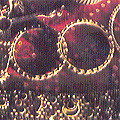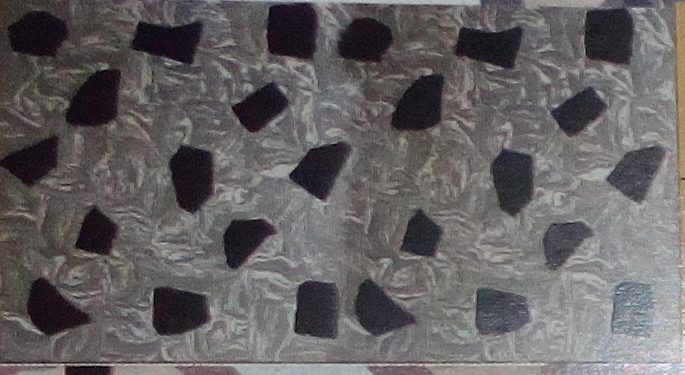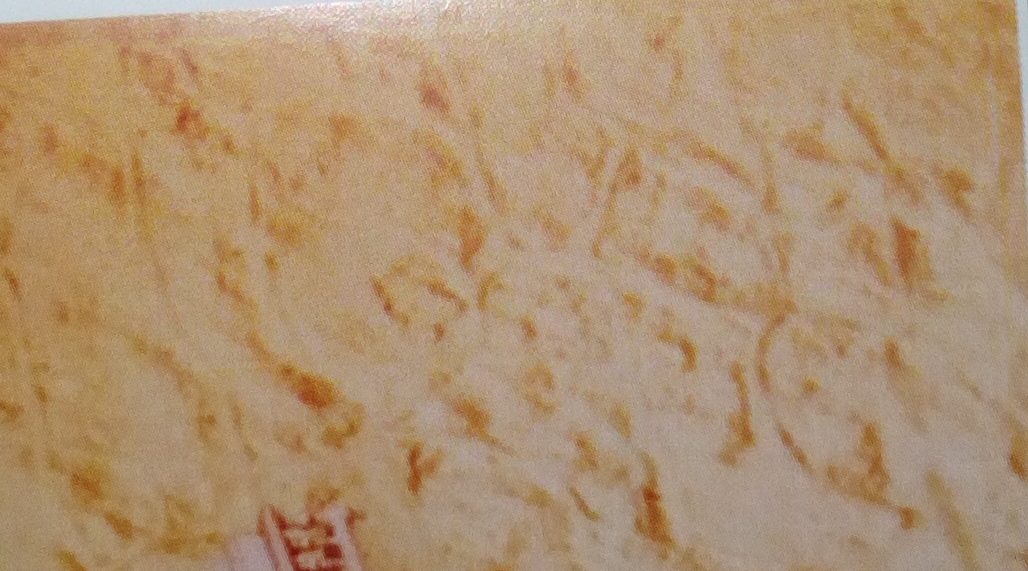Goldsmiths and jewellers constitute one of the largest communities of craftsmen in Pakistan. Every major town has one or more sarafa bazaar and lavishly stocked jewellery stores while small villages have at least one goldsmith each. The reason lies not only in the Pakistani women’s passion for ornaments but also in history.
The wide range of Pakistani ornaments can be understood by reference to three aspects of the custom. First, they have been designed for every part of the body that can be decorated. Second, is the custom of wearing ornaments in ensembles – matching pieces for ears, neck, hands, and feet with accompanying pieces for the ears, nose, neck, and wrists. And third a woman seen without any ornaments, is put down as one in dire straits.
Most of the Pakistani ornaments are made of both gold and silver. Silver being the metal of choice for folk jewellery. The common items are neck collars, ear-rings, necklaces, pendants, bracelets and anklets. Most of these ornaments bear geometric motifs. The pendants and parts of an ornaments are usually large-sized and when stones are set in them they, too are quite big. Whatever their origin the continued use of such ornaments is related to the material circumstances of the wearer. The choice of silver is plainly determined by its being cheaper than gold. The preference for sturdier designs is dictated by the fact that a village woman cannot divide her time between hours of work and leisure. Often she has no time to take her ornaments off and then put them on again, and, may be, the safest way of guarding the valuable for a hut dweller is to wear them on her body all the time. For those who can afford neither gold nor silver, imitation jewellery is available in enormous quantities. For this craftsmen use copper brass, bone, ordinary stone and glass. All the traditional ornaments are available in cheaper materials. Indeed, some of the heavy ornaments, like satlara, ranihar, and even jhoomar are now made available. A large variety is also available in conchshell. In the Northern Areas, the kauri is used to create magnificent ornament from ear-rings, pendants and necklaces to large head covers. Some of the traditional ornaments, like hansli, kangan, pariban, jhanjhan lachhey, pazeb, etc. are usually made of silver, while a few like paunchchi, only of gold, and the rest of both. The recent spurt gold price has led to its replacement by palladium set with diamonds, particularly among Pakistanis working abroad.
Ornaments for the head and face
Ornaments for the head and face are essentially common to both the folk and the modern tradition. The main ornament for the head is the jhoomar, the modern form of which is believed to have been designed by Emperess Noor Jahan. Worn slightly tilted to the left of the head, it is in the shape of a pyramid, studded with stones or glass pieces, and with a fringe of beads or pearls at the base. The teeka is a pendant worn in the middle of the forehead and held in place by a string hooked into the hair. The pendant is generally a circular or crescent shaped disc intricately filigreed and set with stones. The supporting string may be a chain of gold or pearls strung on a silken cord. Sometimes in place of the teeka the whole forehead is covered with singhar patti, a belt with or without a medallion in the middle. Then there are hair pins, with floral motifs and tiny jingles on their heads, to crown the hair bun.
The nose ornaments are the keel (pin), long (clove) and nath. In some part of the country women wear long on both sides of the nose. In the most expensive nath the golden hoop carries a big pearl between two rubies. In the Northern Areas, the tribal belt and parts of Sindh, the nath may have one or two crescent shaped rings suspended from it. The tribal women often wear a bulaq, a ring passing through the wall separating the nostrils.
The ear ornaments come in a far greater variety, their shapes and designs are determined by the wearer’s height and length of the neck and the amount of gold she would like to display. The smallest are tops (studs), small bulbs, plain or latticed discs, or leaves set with a stone in centre. A little higher in estimate are bundey, pendulums and pendants in diverse shapes. The commonest ear ornaments remain the bali (small ring) and bala (large ring). In folk style several rings may be worn along the rim of the ear and may have fringes of glass beads, stars or leaves (pattey). On thicker balis motifs are etched or enamelled. The popular designs are chandbali (moon-shaped ear-ring) and machhli (a jewelled semi-circle with a fish-shaped pendant suspended from its outer edge). But nothing compares in glamour with the jhoomkas – fringed bells suspended from tops – and jhularian – multi-tiered strands hanging from tops.
Ornaments for the neck
The center-piece of the jewellery set is the ornament for the neck, its shape and name changing with the area covered by it. The ancient tight-fitting hansli a crescent shaped piece of silver, is still in use along with a newer version called guluband (neck collar). A looser variety becomes tauq. If the piece comes down a little lower it is described by the generic name of necklace. Still lower down on the breast is worn champa kali, so called because the fringe is made up of a row or champa buds. Then there are hars, malas and lockets. For the more sophisticated there is satlara, a necklace with seven identical strands of pearls, and chandanhar.
Ornaments for the arms and hands
For the arms and hands there are a number of variations on the ancient kara, bangle, and amulet. The kara, worn on the wrist, may be a ring of solid bar or a hollow tube, its thickness depending on the means and the taste of the wearer. Its ends may be shaped like head of birds or flowers and sometimes a small chain may be laid between them. The surface may be plain or decorated with floral motifs chasing or enamel, or studded with stones. Then come chooris. In the old days the chooris used to be rings made of solid bars of metal but now they are mostly in the form of thin strips with the ends soldered to from a circle. Sometimes the sides are cut to form a series of geometric forms with the choori made by soldering small components each set with stone. Those who do not find it convenient to slip their hand through the ring get an arc hinged to the main body of the choori, which can be secured with a lock. Another set of ornaments is designed by placing a circular strip between two chooris. The surface of the strip can embellished in a number of ways. When thin strips with de-grooves cut into the outer edge so as to form pointed needles placed between the side chooris, the piece becomes kangan. When strip is set lower than the side chooris and leaves are suspended from the latter, the ornament is called pariband. A highly rated piece is paunhchi, three rows of small drops with hooks strung on cord. The ornaments growing out of the amulet are bazooband, jaushan and form of amulet cases – rectangular, square, or circular – hooked on after the other in rows, and are tied around the arm with a cord. The dastband is worn on the wrist and resembles a gauntlet; its body not consist of false amulets, plain or pierced, soldered or hook together or linked by chains. For the back of the hand there dastphool, a flower shaped piece, linked with a choori on the wrist and with separate chains to rings for all the five fingers. Finally, there are finger rings in countless designs. The one topped with a mirror is worn on the forefinger and called arsi. It is specially meant for the side. A most romantic moment in the wedding ceremony is when the bridegroom is invited to catch a glimpse of the bride’s face in the arsi mirror.
Ornaments for the foot
The foot ornaments present an equally impressive variety. The most popular piece is the pazeb – a strap overlaid with drops or creepers, or a floral pattern in the open, with a fringe of drops and leaves, with or without jingles. From the base of the ankle it comes down to the back of the heel. A lighter version popularised now is the gulshan patti. The older jhanjhan, hollow tube with pebbles inside, also survives along with lachhey – thin coiled rings. For the toes there are rings and chhallas in numerous designs. Till recently silver was usually used for foot ornaments but now the rich favour delicate gold ornaments.
Ornaments for the waist
For the waist, a girdle, kamarpatti, was once commonly used. It may till be seen in some rural and tribal families, but the piece, which is worn over sari or lehnga, never became very popular.
Hanging fashions and shrinking purses have reduced the demand or quite a few of the traditional ornaments. For instance, jausham, kangan, pariband, and dastphool are now worn by a small number of women. For obvious reasons, working women are moving away from heavy ensembles and are quite happy with a long in the nose, a pali in the ear, and a locket around the neck.
Folk jewellery
In the last few years revival of interest in folk culture has also generated a preference for folk jewellery for ceremonies. With silver being the metal of choice for folk jewellery. The common items are neck collars, ear-rings, necklaces, pendants, bracelets and anklets. Most of these ornaments bear geometric motifs. The pendants and ornaments are usually large-sized and when stones are set in them they, too are quite big. Whatever their origin the continued use of such ornaments is related to the material circumstances of the wearer. The preference for sturdier designs is dictated by the fact that a village woman cannot divide her time between hours of work and leisure. Often she has no time to take her ornaments off and then put them on again, and, may be, the safest way of guarding the valuable for a hut dweller is to wear them on her body all the time.
For those who can afford neither gold nor silver, imitation jewellery is available in enormous quantities. For this craftsmen use copper brass, bone, stone and glass. All the traditional ornaments are available in cheaper materials. Indeed, some of the heavy ornaments, like satlara, ranihar, and even jhoomar are now made available too. A large variety is also available in conchshell. In the Northern Areas, the kauri is used to create magnificent ornament from ear-rings, pendants and necklaces to large head covers. Some of the traditional ornaments, like hansli, kangan, pariban, jhanjhan lachhey, pazeb, etc. are usually made of silver, while a few like paunchchi, only of gold, and the rest of both.
But while jewellery fashions keep changing the craftsman techniques have changed little for centuries. His tools are whole traditional: an anvil and hammers for beating sheet metal an driving punches; chisels, drills, tongs, files, burnishing-stones, scale crucibles, a drawplate, blowpipes, and an oil lamp. The material used for making ornaments is either in the form of sheet or wire. Most ornaments consist of a number of separately made parts which are soldered together. The motifs on most of the jewellery items a derived from shapes of flowers and leaves.The preparation of chains and cords is a specialised branch of the goldsmith’s craft. The chains are made in numerous forms. For some ornaments – like guluband, bazooband, and paunhchi – cords are used. These cords are made by coiling gold or silk thread over a core of tougher threads, and the ends are knotted in fine shapes.
Gallery
YOUR VIEWS
PRACTITIONERS: INDIA
Access 70,000+ practitioners in 2500+ crafts across India.
BIBLIOGRAPHY
10,000+ listings on arts, crafts, design, heritage, culture etc.
GLOSSARY
Rich and often unfamiliar vocabulary of crafts and textiles.
SHOP at India InCH
Needs to be written.






